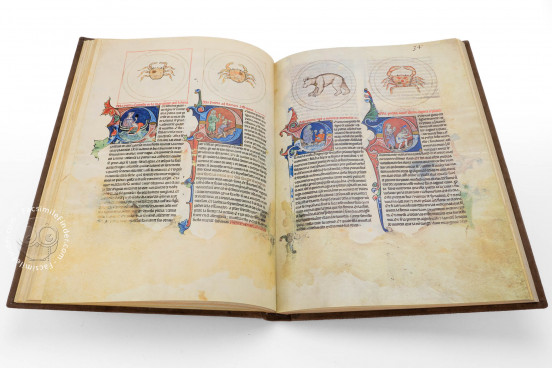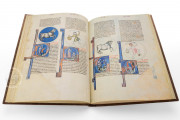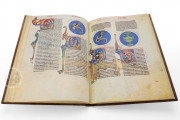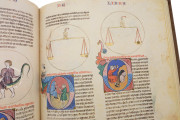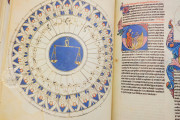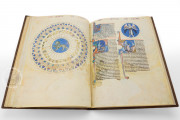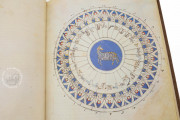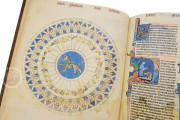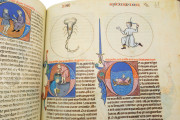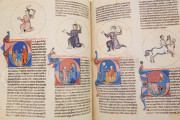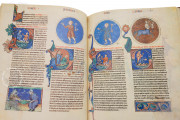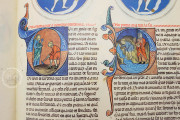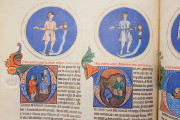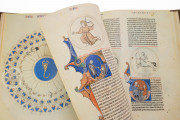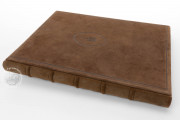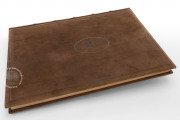Produced in the Castilian royal scriptorium around 1278, the Lapidary of Alfonso the Wise was made for Alfonso X, King of Castile and Leon. Although called a lapidary, the manuscript presents four separate lapidary texts, all in Castilian. As the diverse source texts for the lapidary demonstrate, Alfonso's court scholars brought together Christian, Muslim, and Jewish sources in the interest of scientific advancements. Hundreds of miniatures in various states of completion, historiated and decorated initials, and painted tailpieces enhance the manuscript.
The first two lapidaries, arranged according to signs of the zodiac, are lavishly illuminated (fols. 1-100). The third, ordered according to the seven planets, has spaces reserved for column miniatures and initials, but only a few sketches were drawn (fols. 102-110). The last, arranged quasi-alphabetically, has spaces reserved for two large initials never executed (fols. 111-119).
Deluxe Historiated Initials
Gorgeous miniatures in hues of pink, red, blue, green, and gold are found on every page of the first two lapidaries. In the opening miniature, Aristotle instructs a group of scholars ready to receive the wisdom of the lapidary (fol. 1r).
More than 300 historiated initials in the opening lapidary show the extraction of stones and their uses by medieval sages. Typically, in the scenes of extraction, the work is supervised by a figure in a long robe. A laborer in a short tunic—often smaller—digs the soil or reaches into a body of water to obtain the specimen. The scene is silhouetted against a solid blue or rust-colored background.
Constellations representing the phases of the zodiacal signs appear in column miniatures in the first two lapidaries. The style of illumination bears a close resemblance to that found in other Alfonsine manuscripts, although the drolleries (amusing things) in the margins are uniquely found in this manuscript.
A Precise and Professional Hand
A professional scribe wrote the text in two columns in Gothic Textualis script. A rubric in either blue or red introduces each stone. Pen-flourished initials, alternating between red flourished with blue and blue flourished with red, articulate the texts into smaller sections. In the last lapidary, most red letters never received their blue flourishing.
While most medieval lapidaries do not openly associate the properties of the stones with the influence of celestial bodies, Alfonso's lapidary makes this connection explicit in both text and image: each of the twelve zodiacal signs rules over thirty stones in the first text, and each sign rules over three stones in the second.
A Gift to a King and from a King to a Royal Library
Alfonso the Wise often expressed his scholarly interests in luxury objects, and many of his deluxe books have been preserved. The lapidary manuscript was given to the royal library at El Escorial by its founder, Philip II (1527-1598), King of Spain, who had received it in a bequest from Diego Hurtado de Mendoza (1503-1575).
We have 1 facsimile edition of the manuscript "Lapidary of Alfonso the Wise": Primer Lapidario del Rey Alfonso X El Sabio facsimile edition, published by Edilan, 1982
Request Info / Price
